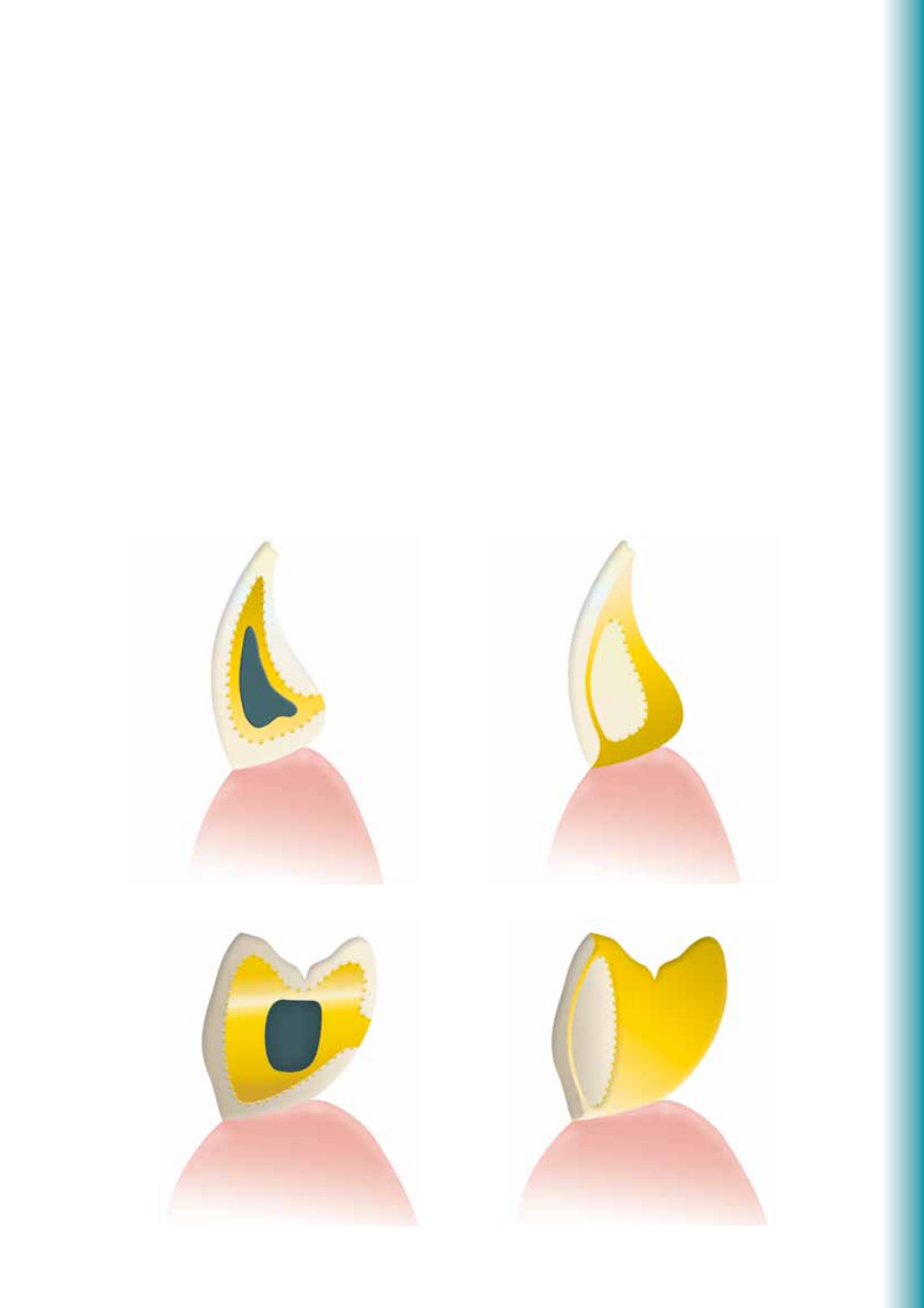Ivoclar Vivadent SR Adoro User Manual
Page 33

33
3. Design of bridge pontics
Bridge pontics are designed taking esthetic and functional aspects as well as oral hygiene into consideration. The area of
the pontic that contacts the alveolar ridge should be made entirely of metal (polished to a high gloss) or composite. The
transition between the metal and composite should always be located in an area where efficient oral hygiene is ensured.
If adequate space is available, the contact area is made of composite. In order to ensure adequate stability between the
bridge pontic and bridge abutment, a palatal and/or lingual scallop is recommended.
If space is limited, the contact area is made of metal burnished to a high gloss. The palatal and/or lingual areas are made
of metal to ensure adequate stability. To prevent shrinkage cavities from forming in extensive pontics, it is advisable to
hollow out the pontic. A wax wire is placed in the hollowed space (ample space available) and formed in such a way that
it is level with the abutment teeth. This measure provides additional retention and helps achieve an even colour effect in
the bridge pontic and abutment.
Ideal space available
Limited space available
Practical
Pr
ocedur
e
for
Fixed
Metal-Supported
Restorations
